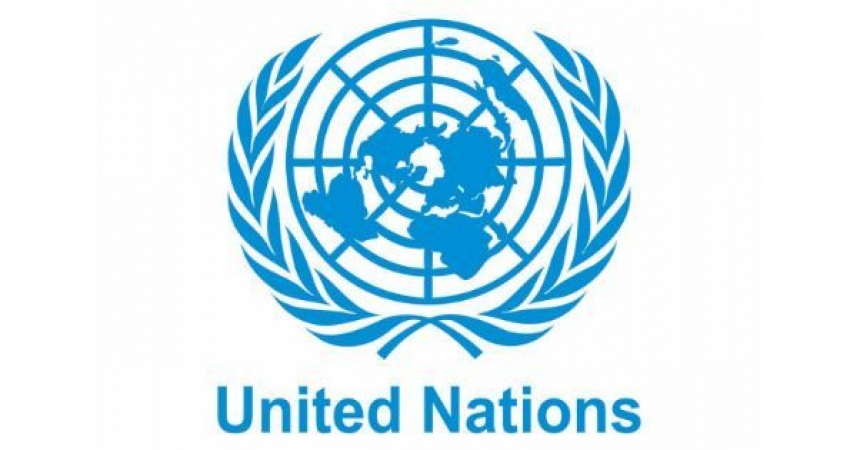
By Ajala Samuel Akindele
A new report has predicted that an estimated 71 million additional people will be living in extreme poverty due to COVID-19.
The report states that Southern Asia and sub-Saharan Africa are expected to see the largest increases in extreme poverty, with an additional 32 million and 26 million people, respectively, living below the international poverty line as a result of the pandemic.
It was published by the United Nations Department of Economic and Social Affairs in collaboration with over 200 experts from more than 40 international agencies, using the latest available data and estimates.
According to the report titled Sustainable Development Goals Report 2020, “An estimated 71 million additional people will be living in extreme poverty due to COVID-19.
“Southern Asia and sub-Saharan Africa are expected to see the largest increases in extreme poverty, with an additional 32 million and 26 million people, respectively, living below the international poverty line as a result of the pandemic,” it said.
“The share of the world’s population living in extreme poverty declined from 15.7 per cent in 2010 to 10.0 per cent in 2015. However, the pace of global poverty reduction has been decelerating. Nowcast estimates put the global poverty rate in 2019 at 8.2 per cent.
“Even before COVID-19, baseline projections suggested that 6 per cent of the global population would still be living in extreme poverty in 2030, missing the target of ending poverty.
“Assuming the pandemic remains at levels currently expected and that activity recovers later this year, the poverty rate is projected to reach 8.8 per cent in 2020.
“This is the first rise in global poverty since 1998, and close to the 2017 level.”
A new report has predicted that an estimated 71 million additional people will be living in extreme poverty due to COVID-19.
The report states that Southern Asia and sub-Saharan Africa are expected to see the largest increases in extreme poverty, with an additional 32 million and 26 million people, respectively, living below the international poverty line as a result of the pandemic.
It was published by the United Nations Department of Economic and Social Affairs in collaboration with over 200 experts from more than 40 international agencies, using the latest available data and estimates.
According to the report titled Sustainable Development Goals Report 2020, “An estimated 71 million additional people will be living in extreme poverty due to COVID-19.
“Southern Asia and sub-Saharan Africa are expected to see the largest increases in extreme poverty, with an additional 32 million and 26 million people, respectively, living below the international poverty line as a result of the pandemic,” it said.
“The share of the world’s population living in extreme poverty declined from 15.7 per cent in 2010 to 10.0 per cent in 2015. However, the pace of global poverty reduction has been decelerating. Nowcast estimates put the global poverty rate in 2019 at 8.2 per cent.
“Even before COVID-19, baseline projections suggested that 6 per cent of the global population would still be living in extreme poverty in 2030, missing the target of ending poverty.
“Assuming the pandemic remains at levels currently expected and that activity recovers later this year, the poverty rate is projected to reach 8.8 per cent in 2020.
“This is the first rise in global poverty since 1998, and close to the 2017 level.”
Working poverty to increase sharply
“The share of the world’s workers living in extreme poverty fell by half over the last decade: from 14.3 per cent in 2010 to 7.1 per cent in 2019.
“However, the pace of progress has slowed since 2013, requiring reinvigorated efforts to reach the 2030 target. Moreover, the impacts of COVID-19 are projected to push millions more into poverty.
” As of April 2020, recommended or required workplace closures around the world affected 81 percent of employers and 66 percent of own-account workers, severely limiting jobs and income.
“The gender gap in working poverty had almost been bridged, but evidence is emerging that women are being disproportionally affected by the pandemic.
“Young workers are exposed to poverty more systematically than adults, a result of inadequate earnings and deficits in job quality. In 2019, 12.8 percent of workers between the ages of 15 and 24 lived in poverty, compared with 6.3 percent of workers over the age of 24, with the difference between youth and adult working poverty rates decreasing only marginally since 2000.
“These disparities are likely to be exacerbated by the COVID-19 crisis, which has already led to a sharp increase in unemployment and underemployment, a decline in labour income and job-quality challenge.”
A new report has predicted that an estimated 71 million additional people will be living in extreme poverty due to COVID-19.
The report states that Southern Asia and sub-Saharan Africa are expected to see the largest increases in extreme poverty, with an additional 32 million and 26 million people, respectively, living below the international poverty line as a result of the pandemic.
It was published by the United Nations Department of Economic and Social Affairs in collaboration with over 200 experts from more than 40 international agencies, using the latest available data and estimates.
According to the report titled Sustainable Development Goals Report 2020, “An estimated 71 million additional people will be living in extreme poverty due to COVID-19.
“Southern Asia and sub-Saharan Africa are expected to see the largest increases in extreme poverty, with an additional 32 million and 26 million people, respectively, living below the international poverty line as a result of the pandemic,” it said.
“The share of the world’s population living in extreme poverty declined from 15.7 per cent in 2010 to 10.0 per cent in 2015. However, the pace of global poverty reduction has been decelerating. Nowcast estimates put the global poverty rate in 2019 at 8.2 per cent.
“Even before COVID-19, baseline projections suggested that 6 per cent of the global population would still be living in extreme poverty in 2030, missing the target of ending poverty.
“Assuming the pandemic remains at levels currently expected and that activity recovers later this year, the poverty rate is projected to reach 8.8 per cent in 2020.
“This is the first rise in global poverty since 1998, and close to the 2017 level.”
Working poverty to increase sharply
“The share of the world’s workers living in extreme poverty fell by half over the last decade: from 14.3 per cent in 2010 to 7.1 per cent in 2019.
“However, the pace of progress has slowed since 2013, requiring reinvigorated efforts to reach the 2030 target. Moreover, the impacts of COVID-19 are projected to push millions more into poverty.
” As of April 2020, recommended or required workplace closures around the world affected 81 percent of employers and 66 percent of own-account workers, severely limiting jobs and income.
“The gender gap in working poverty had almost been bridged, but evidence is emerging that women are being disproportionally affected by the pandemic.
“Young workers are exposed to poverty more systematically than adults, a result of inadequate earnings and deficits in job quality. In 2019, 12.8 percent of workers between the ages of 15 and 24 lived in poverty, compared with 6.3 percent of workers over the age of 24, with the difference between youth and adult working poverty rates decreasing only marginally since 2000.
“These disparities are likely to be exacerbated by the COVID-19 crisis, which has already led to a sharp increase in unemployment and underemployment, a decline in labour income and job-quality challenge.”
Recommendations
The report says there is no doubt that the COVID-19 pandemic has shaken the 2030 Agenda for Sustainable Development to its very core.
“However, we must hold firm in our convictions and not let the crisis derail our hopes and ambitions. In fact, the principles on which the SDGs were established are key to building back better in the post-COVID-19 recovery.
“The continued pursuit of these universal Goals will keep Governments focused on growth, but also on inclusion, equity and sustainability.
“Our collective response to the pandemic can serve as a “warm-up” for our preparedness in preventing an even larger crisis – that is, global climate change, whose effects are already becoming all too familiar.
“Governments and businesses should heed the lessons learned from this wake-up call to formulate the kinds of transitions needed to build a healthier, more resilient and more sustainable world.” (Premium Times)









259359 311461Excellent site, determined several something entirely new! Subscribed RSS for later, aspire to see more updates exactly like it. 420237
478874 308156Hmm, I never thought about it that way. I do see your point but I think several will disagree 535266